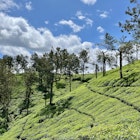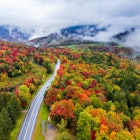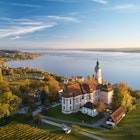
Oct 5, 2025 • 6 min read
You'll find soaring peaks, postcard-perfect islands, fertile heartlands and vivid underwater scenery, all in Java. Here are the top places to go.

Oct 5, 2025 • 6 min read
You'll find soaring peaks, postcard-perfect islands, fertile heartlands and vivid underwater scenery, all in Java. Here are the top places to go.

Oct 5, 2025 • 6 min read
From speaking Spanish to avoiding common tourist mistakes, this guide full of top tips can get you ready for a trip to Spain.

Oct 5, 2025 • 5 min read
Cambodia's seasons go from hot to hotter to hottest. Find out which months are better for your trip with this guide to rainfall, temperatures and events.

Oct 4, 2025 • 6 min read
K-beauty is riding high on the cultural wave. Here are the best products to buy in Korea and where to buy them.

Oct 4, 2025 • 8 min read
Get to know Gran Canaria, the third-largest Canary Island, with this first-timer's guide.

Oct 3, 2025 • 10 min read
Cheap, frequent domestic flights, generally well-maintained roads and a vast bus network give travelers ample options for getting around Türkiye.

Oct 3, 2025 • 7 min read
These are the perfect places to visit if you're seeking shimmering northern lights, festive markets, action-packed safaris and underwater adventures.

Oct 3, 2025 • 5 min read
Whether you're a foodie bound for Lima or an adventurer heading for the Inca Trail, find the perfect time for your Peru vacation here.

Oct 3, 2025 • 5 min read
Ireland takes pride in its status of the birthplace of Halloween, or Samhain.

Oct 3, 2025 • 7 min read
Dublin brings you an array of spooky experiences, from the Gravedigger Ghost Tour to a crypt-filled church to a haunted castle.

Oct 3, 2025 • 6 min read
Wayanad a region with boundless tea estates, mist clinging to mountains and waves of coconut palms, betel nut palms and banana trees.

Oct 3, 2025 • 14 min read
In a country mad for the open road, Route 66 is the quintessential American road trip. Our full guide covers where, when and how to get the most out of it.

Oct 3, 2025 • 12 min read
Explore this lush region in northern Spain, with its rugged mountains with brown bears, dramatic coastlines and unique architectural history.

Oct 3, 2025 • 13 min read
The mountainous coast of the Italian Riviera attracts travelers in droves during the summer. Follow this 5-day itinerary to take in the highlights.

Oct 3, 2025 • 6 min read
Ireland’s second-largest city earns its fierce pride with attractions that combine the charm of a small town and the cultural scene of a much larger burg.

Oct 3, 2025 • 11 min read
While Canada’s Alberta and British Columbia provinces are alluring destinations any time of year, fall is undoubtedly my favorite.

Oct 3, 2025 • 8 min read
Siem Reap has long attracted visitors to Angkor, but the city adds an alluring mix of nightlife, adrenaline-fueled activities and cultural experiences.

Oct 3, 2025 • 8 min read
The Algarve’s capital of partying by the beach, Albufeira also has history, culture and nature – if you know where to look.

Oct 3, 2025 • 12 min read
Here's everything you need to know about snorkeling and diving in Indonesia, where the marvels below the waves are as remarkable as life on land.

Oct 3, 2025 • 8 min read
Get an authentic taste of Thailand's northwest corner with this guide to driving the Mae Hong Son loop on a motorbike.

Oct 3, 2025 • 8 min read
See some of the US and Canada's best fall foliage on these scenic road trips.

Oct 3, 2025 • 7 min read
Europe's little-known wine regions provide fabulous wines and travel opportunities.